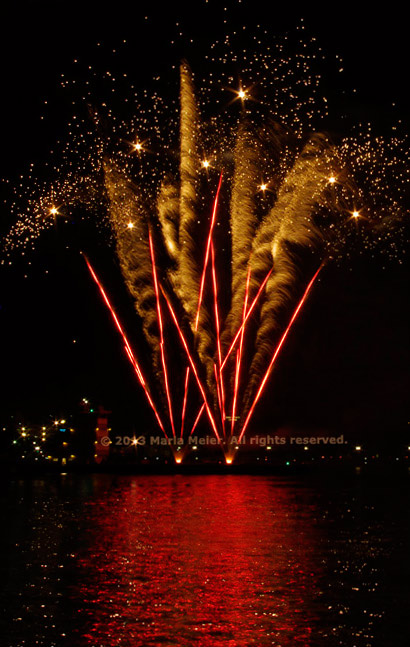
Stars, Stripes, and Squiggles
Fireworks photography can be challenging, but here are a few tips to help you create some beautiful images of those colorful streaks of light being shot into the night sky.
1. Arrive Early and Scout the Location
Wind Direction: This is one of those times when a bit of wind is advantageous for haze / smoke free images. Find a location where the wind will not be driving the smoke towards you. Place yourself where the wind is either hitting you in the back or from the side. If there is no wind, work on getting those first bursts of light, before the smoke builds in the air.
Foreground and Background Subjects: Do you want to include people or maybe reflections, interesting buildings or monuments, or is your focus going to be on just the fireworks, with an unobstructed view? Decide what perspective you would like to portray and set yourself up in your desired location.
2. MOST IMPORTANT: Use a Tripod
With longer shutter speeds being used during night photography, stabilizing the camera is very important as it will not only pick up the motion of the fireworks but any minute motion of the camera.
Note: Get creative if you like and give that camera a shake or zoom the lens while the shutter is open.
3. Use a Remote Shutter Release
This will insure that your camera will remain stable. If you don’t own a remote shutter release, use the self-timer, but know it will be more challenging as one will need to anticipate and time the action even more carefully.
4. Turn the Flash Off
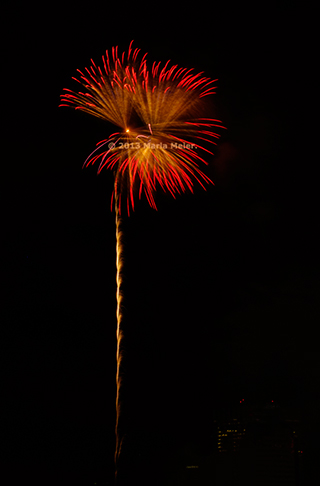
Fireflower 1
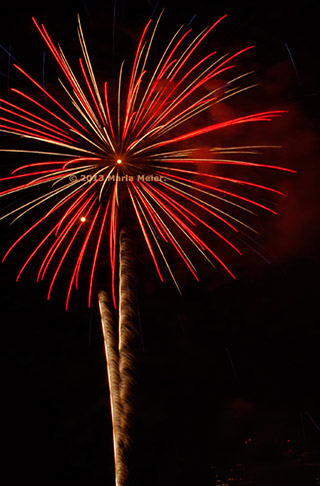
Fireflower 2
5. Use Manual Focus
Your AF (Auto Focus) can become confused. You’ll hear and see it changing positions forward and back as it tries to figure out where to focus in the dark. Find the AF/MF switch (typically on the barrel of the lens) – move it to MF (Manual Focus).
If your lens includes an infinity mark (∞), then set it to infinity. If not, then pre-focus on something in the very far distance while still in auto focus and then reset it to MF. This will now lock the focus at infinity for the night’s photography.
6. Keep the Horizon Level
If you are using a wide angle lens, then this is even more important, as you may be capturing background elements, such as buildings, water or land within the photos. As soon as you set up, be sure the camera is level.
7. Framing the Image
You can frame the subjects within either a vertical or horizontal format. I personally prefer vertical to show the long trails of light, but use your artistic eye to create the look you like.
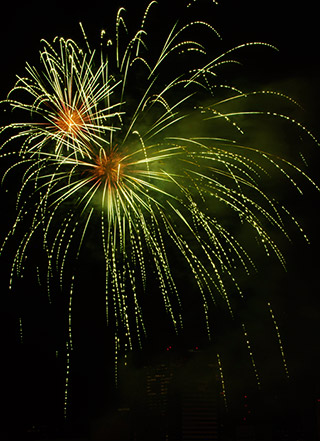
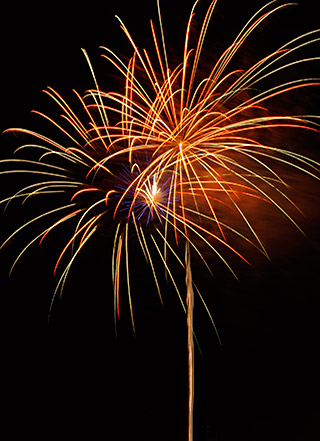
The further away you are from the action, the less amount of time you’ll spent adjusting the camera angle and the greater your chances are of capturing the larger light show with multiple bursts. If you are relatively close to the fireworks, you may need to anticipate where and how high the rocket will go and adjust the camera rather quickly when needed. With a little practice, you’ll get better and better at it.
8. ISO
Photographing at a low ISO is preferable: 50, 100 or 200 in order to create clean images.
9. Aperture
Start working within the f/8 to f/16 range. If you would like to get those star effects in those spots of light as seen in the lead photo, try smaller apertures, such as f/16 to f/22. Work with your camera settings until you get the desired look.
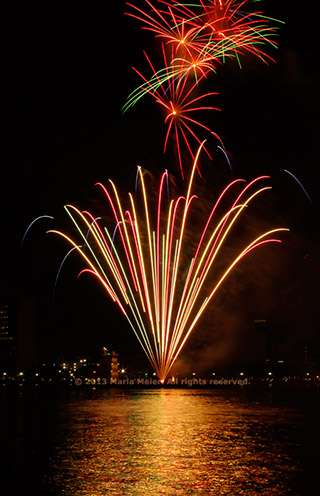
10. Shutter Speed
Shutter speeds are probably more important than your aperture settings. You’ll want nice long exposures in order to capture the movement of each burst of light.
Try photographing in ‘bulb’ mode – when the shutter release is pressed, it allows you to keep the shutter open until you remove your finger. Anticipate when the rocket is about to explode and hold down the shutter release until the explosion is complete (usually a few seconds). To get more explosions in the same frame, carefully cover the lens with something black (I use a hat) while at the same time keeping the shutter open. When you see the rocket go off, move the hat to expose and then recover the lens with the hat and so on with each subsequent rocket, until the explosions are done.
You can also try setting the shutter speed within the ½ sec. to 3 sec. range. The longer the exposure, the more bursts you’ll capture, but just do a quick check of the image results to be sure the shutter speed is not too long, as that can allow too much light to the sensor during multiple bursts and the photos will be over exposed.
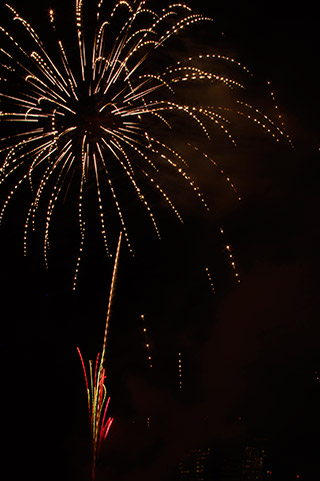
I chose more individual bursts over multiple explosions most of the time. You may enjoy those panoramic views which include cityscapes or landscapes.
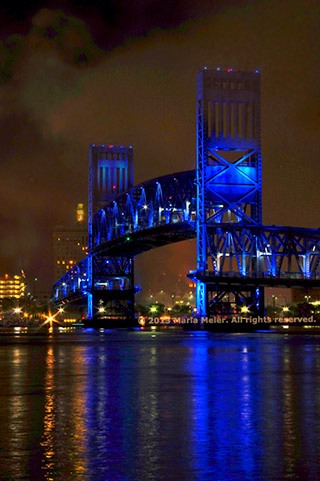
When the fireworks show is over and the smoke hangs in the air, it can lend to some interesting and sometimes eerie images as city lights reflect within.
Just keep experimenting with various camera setting and techniques, do those quick checks of the image results and make the necessary adjustments until you’ll find those with the look you like. Take lots and lots of images to increase your chances of making some great photos. Most of all have fun.
by Marla Meier, Apogee Photo Magazine

Leave a Reply